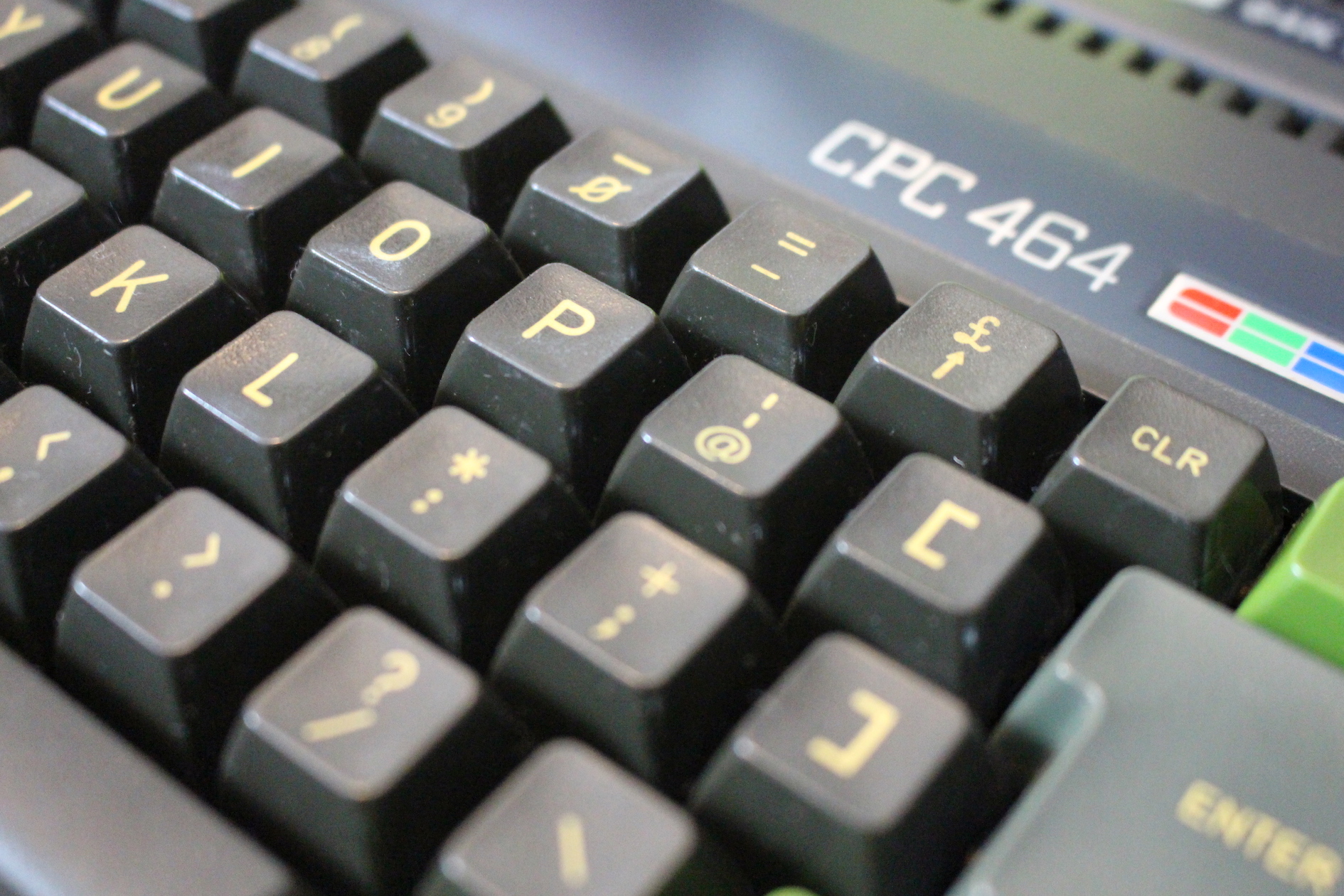Amstrad positioned the CPC464 at the higher end of the home computer market; making it perfect for home office and small business users as well as kids and adults who wanted a computer with some oomph behind it. Consequently the CPC has some very cool features that are well worth taking a look at.
Got RAM?
Firstly, let’s take a look at the CPC’s memory capacity. As the name suggests, the CPC 464 comes with 64k of built-in memory, 42k of which is available to the user after BASIC and AMSDOS have been loaded in on boot. There were 64k, 128k and even 512k memory expansions available but this extra memory was not made accessible via BASIC without the use of bank managing software. 42k of accessible memory was a lot for a home microcomputer in 1984 and it dwarfed the available memory of the CPC’s most popular rivals.
When discs arrived, the 464’s memory would reduce to 41k of available memory due to an additional 1k being needed by the computer to handle the extra information needed to manage discs. Things like which drive you are currently working on (|A or |B), which |USER area on the disc you are in, and so forth.
This would introduce some incompatibilities with older software that used the full 42k of available space; which was unfortunate because Amstrad had specifically warned about the need to keep that 1k of memory free in the CPC’s manual (so it turns out developers don’t read those things either – good to know!).
In contrast to the CPC’s rivals, the memory available to users on boot-up is substantial. A Commodore 64 user had 38k of RAM available to users once the computer’s ROMs were loaded in; which is a pretty decent amount of memory for the average user. The ZX Spectrum, coming in both 16 and 48k versions initially, had a variable amount of memory available to the end user, but neither amount matched the CPC’s useable RAM.
Consequently, you got a lot more space to play with from your CPC right out of the box. That’s very useful to home coders and anyone wanting to work with large files; such as a long payroll sheet or other business applications.
Programmable Function Keys
Now let’s move on to the function keys. Unlike a number of other systems, such as the Commodore 64 and BBC, you may be hard-pressed to locate the function keys on a CPC at first glance. That’s because the 464 has a separate numeric keypad that doubles as a set of function keys. It’s a nice feature that makes these keys far more useful to the average user.
All function keys are user-programmable from BASIC and a number of office programs make use of them. As the first issue of Amstrad’s official magazine (more on that when we’ll cover its launch next episode) pointed out, programming the function keys was a good idea if you were programming your CPC; as it meant you could have a lot of often-used commands literally at your fingertips.
Windows, But Not As We Know It
Another cool feature of the CPC was its ability to split its screen display into regions; which the manual calls WINDOWS but which a modern user would not recognise as a window like we know them now. Let’s stick with calling them “windows” for history’s sake however.
The WINDOW command sets a specific area of screen as separate from the rest of the screen; allowing it to hold its own pen and paper colours and also scrolling it independently of the rest of the screen. This is useful in a number of programs, especially something like a text adventure where you might want the room description to scroll separately from a graphic or the area for the user to input commands.
Eight windows are possible on a CPC at any one time, and they can be overlapped. Printing to WINDOW zero will always print to the standard display, however. This can be very useful in many circumstances but it plays havoc on your screen layout if you accidentally type the wrong number during coding.
It’s worth noting that printing to WINDOW 9 will write to cassette, which opens up a great deal of possibilities for data storage and output in your own software. Followers of the Live Game Coding series will recognise that the PRINT #9 command is how we got our adventure game to save the player’s progress, for example.
All in all, the CPC was a very impressive piece of hardware for its time and it’s easy to see why so many computer magazines were impressed with its capabilities. As 8-bit computers go, the CPC 464 still holds its own even today and while the old playground battles sadly seem like they will not die out any time soon; the CPC is still a winner on the hardware front.
This article is adapted from a feature in Episode 1 of CPCine: The Amstrad CPC Video Game Magazine.
